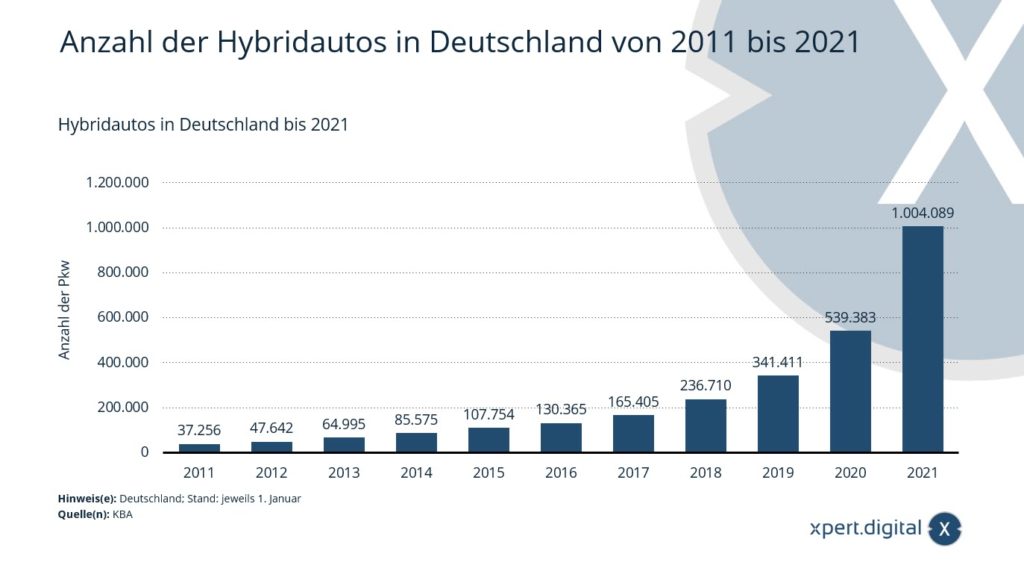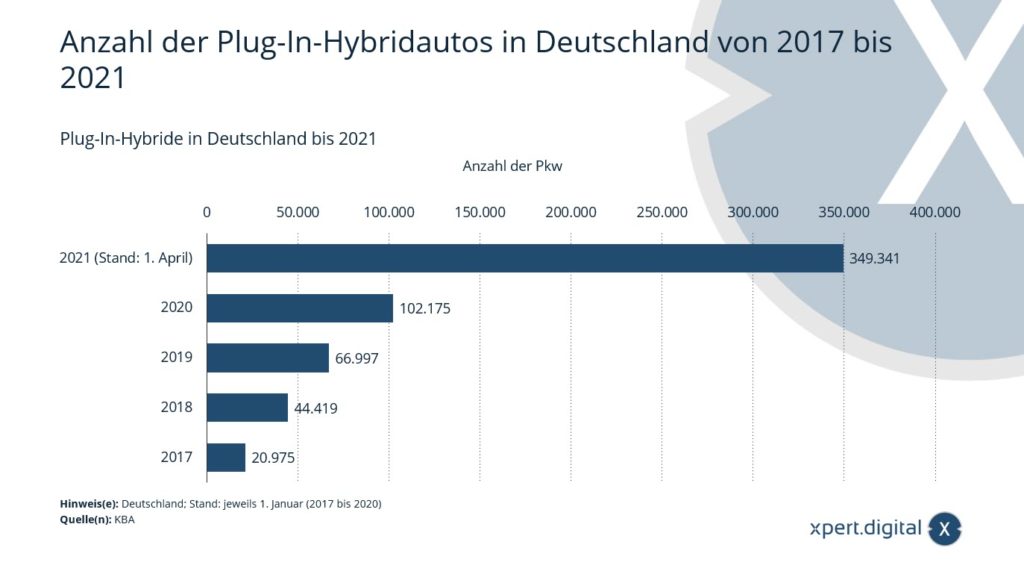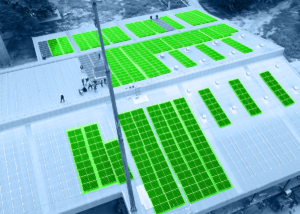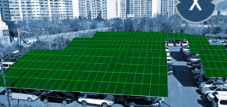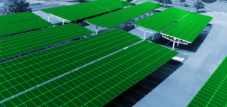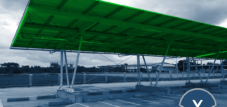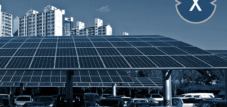Photovoltaics (PV): Build a solar carport and solar system on a flat roof - looking for a system from Kiel, Lübeck, Flensburg or Neumünster?
Language selection 📢
Published on: July 9, 2021 / update from: August 4, 2021 - Author: Konrad Wolfenstein
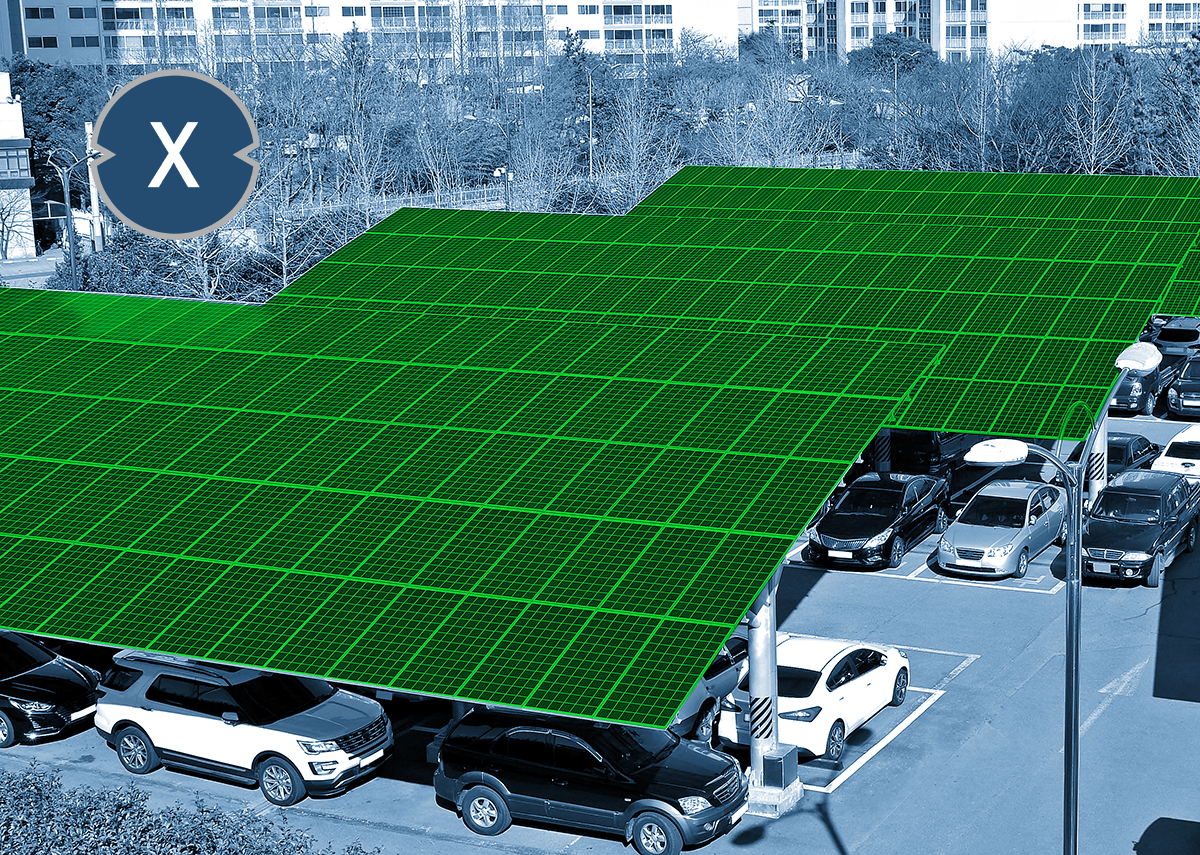
Photovoltaic solar carport and solar for flat roofs and pitched roofs – Xpert.Digital / seo byeong gon|Shutterstock.com
The growth industry of electric cars challenges the infrastructure
Demanding and not supporting is the watchword of the moment. As of April 1, 2021, there are well over 700,000 plug-in hybrid vehicles and electric cars. This means that in April 2021 a 300% increase was achieved compared to the entire previous year, 2020.
When we talk about funding, funding always interacts with events. In the area of electromobility, however, there is an acute undersupply of charging stations and charging points, so that a demand for the necessary capacities to expand electromobility is necessary and at the same time represents a challenge for the entire economy.
📣 Parking areas solar solutions for industry, retail and municipalities
Everything from a single source, specially designed for solar solutions for large parking areas. You refinance or counterfinance into the future with your own electricity generation.
🎯 For solar engineers, plumbers, electricians and roofers
Advice and planning including a non-binding cost estimate. We bring you together with strong photovoltaic partners.
👨🏻 👩🏻 👴🏻 👵🏻 For private households
We are positioned across regions in German-speaking countries. We have reliable partners who advise you and implement your wishes.
In comparison, the number of street filling stations has decreased over the past ten years. The number fell continuously from 14,410 in 2010 to 14,089 in 2020. The number of charging points in Germany developed in the opposite direction; from 2012 to 2021 the number increased almost tenfold. With the increasing number of electric cars, the number of charging stations will continue to grow in the future.
While a charging station consists of one or more charging points, the difference to a charging point is that only one electric vehicle can be charged at a charging point at a time. A charging station can therefore consist of one or more charging points.
In addition to wallboxes, charging stations are part of the charging points. There are currently over 39,500 charging points in total (as of February 2021).
Suitable for:
- Why solar carports are now important
- Are solar farms the most popular electricity generation systems?
39,500 charging points compared to 14,000 filling stations only looks very good at first glance. But the fact is that gas stations can refuel and charge more vehicles at the same time much faster. According to estimates, electric car charging stations can currently only cover 10% of the performance level compared to gas stations. What makes things even more difficult is the patchy infrastructure of charging options. If you also take into account that the proportion of electric cars in daily traffic is much lower. The problem will increase even more if the proportion of electric cars grows in the next few years, which is to be expected.
This should be counteracted with a solar requirement and the expansion of solar carports In general, the expansion of renewable energies should focus on solar parks , solar fields and open- space photovoltaic systems . The emission-free future of transport and its infrastructure will be introduced logically and consistently not with the famous electricity from the socket, but with solar carports whether a solar requirement makes sense for this purpose. But the fact is that interest in solar systems is not yet widespread among the population. Although many are environmentally conscious and interested in ecology, interest in solar systems themselves has remained relatively the same at just under 50% from 2013 to now. It is right that everyone contributes their part to an emission-free environment and does not wait for the electricity from the can to become emission-free and greener.
In order to increase the charging options and at the same time obtain the charging current from solar energy, open parking spaces now come into play.
What are open parking spaces?
This does not mean public parking spaces. Open parking spaces are usually:
- A storage area open on the side walls, not a barn or shed or similar.
- Carports, covered parking spaces
- Uncovered parking spaces
- Parking available on a property
- Outdoor parking spaces
Suitable for:
In Baden-Württemberg this affects all open parking spaces with a number of 75 or more parking spaces. Section 8b of the Climate Protection Act in Baden-Württemberg defines that “ a photovoltaic system must be installed above the parking space suitable for solar use There is no alternative as with the requirement for photovoltaic systems for new non-residential buildings.
Our solar parking solution is modular and scalable:
- Quick and easy assembly
- Stable strip foundation as collision protection
- Individually customizable design (color, materials, surface, size, etc.)
- Installation of charging stations and inverters is possible at any time
- Scalable & modular: Available as a single, double or arbitrarily scalable row carport
- Can even be used in the standard version for very high wind and snow loads (s k = 2.2 kN/m²)
- Extra large and wide parking spaces and very easy parking thanks to W-shaped supports
- High-quality design for sophisticated and long-lasting requirements: Hot-dip galvanized steel construction (DIN EN 10346, DIN EN 1461)
- [Click here for more]
Why solar carports?
The demand for electric vehicles is increasing. The population has increased more than fifty-fold worldwide since 2012. In 2007 there were a total of 8 new registrations of electric cars in Germany. 2019 194,163 new registrations of electric vehicles! From January to May 2021 there were already 115,296 new registrations. The trend will continue to develop accordingly. Solar carports are already interesting investment goods. This also means an increase in the attractiveness of the production and company location for personnel and customer development.
Suitable for:
Industrial flat roof solar systems and solar parks or outdoor photovoltaic systems are another alternative
If you are thinking of investing in a solar carport , a solar system on the company roof is also recommended. Exploiting any energy potential for an emission-free and autonomous power supply is also a competitive advantage and securing market shares.
More about it here:
Charging stations and charging infrastructure
A solar carport alone is not enough. Fundamental questions need to be clarified. Should the energy generated be fed into the grid or parked in energy or electricity storage? What are the load profiles, the technical connection conditions, number of charging stations, vehicle downtime and ultimately the specified total PV output? Will the charges be recorded with the company if the employee charges their company car from home? These are questions that we will have to deal with in the future. It is different from what we are used to today.
Suitable for:
Hybrid cars in Germany by 2021
Inventory of hybrid cars at record levels
In 2021, the number of hybrid passenger cars in Germany amounted to around one million units. In 2011, around 37,300 hybrid cars were registered in Germany. Since then, the population has increased continuously every year. A hybrid vehicle is a vehicle in which there are at least two energy converters and two in-vehicle energy storage systems to power the vehicle. Energy converters are, for example, electric, gasoline and diesel engines, energy storage devices are, for example, accumulators, fuel tanks or gas tanks. Hybrid vehicles that also have an electric motor are classified as electric cars (plug-in hybrid).
Purchase bonus for electric vehicles and plug-in hybrids
The purchase or leasing of various types of electric cars can be subsidized in Germany through the so-called environmental bonus. The purchase (purchase or leasing) of an electric vehicle that is registered for the first time and does not exceed a net list price of the basic model of 65,000 euros is eligible for funding. Pure battery electric vehicles are funded with up to 9,000 euros and hybrid electric vehicles with up to 5,625 euros. Two-thirds of the premium is borne by the federal government and one-third by the automobile manufacturer. This increased subsidy (previously: pure battery electric vehicles 4,000 euros, hybrid electric vehicles 3,000 euros) was decided as part of the economic stimulus program to combat the effects of Corona.
The demand for alternative drives is increasing
The share of classic drives in new registrations has fallen significantly in recent months, but the number of electric cars in Germany is continuously increasing. However, other alternative drives do not show comparable growth; plug-in hybrids and BEVs also dominate the other alternative drives when it comes to new registrations.
Number of hybrid cars in Germany from 2011 to 2021
2011 - 37,256 hybrid cars
2012 - 47,642
2013 - 64,995 hybrid cars 2014 - 85,575 hybrid cars
2015 - 107,754 hybrid cars
2016 - 130,365 hybrid cars
- 2018 - 23 6,710 hybrid cars
2019 –
341,411 hybrid cars
2020 – 539,383 hybrid cars
2021 – 1,004,089 hybrid cars
Plug-in hybrids in Germany by 2021
The number of plug-in hybrid cars is continuously increasing - on April 1, 2021, the number of passenger cars with a plug-in hybrid drive in Germany amounted to around 349,300 units. Together with purely electrically powered cars (BEVs), the number of electric cars in Germany is approaching the one million mark.
A hybrid vehicle has at least two energy converters and two energy storage systems built into the vehicle to power the vehicle. Examples of energy converters include electric, gasoline and diesel engines; Examples of energy storage are accumulators, fuel tanks or gas tanks. In total, there were around a million hybrid vehicles in Germany at the beginning of 2021 (including plug-in hybrid cars).
Hybrid vehicles that also have an electric motor are classified as electric cars (plug-in hybrid).
The biggest difference between an electric car and a plug-in hybrid is the drive. In electric cars, the drive is purely electric, while in plug-in hybrids there is always a conventional combustion engine on board in addition to the electric motor. Hybrid cars therefore have two drive systems. In a pure hybrid vehicle, the electric motor only supports the combustion engine when starting and the injector takes over at higher speeds in the low speed range. This hybrid electric motor cannot therefore be viewed as a stand-alone vehicle drive or as an equivalent electric motor in a plug-in hybrid car.
Suitable for:
- Solar carports as a further step for the growing charging station infrastructure
- The interest and need for solar carports is growing
Number of plug-in hybrid cars in Germany from 2017 to 2021
- 2017 – 20,975 plug-in hybrid vehicles
- 2018 – 44,419 plug-in hybrid vehicles
- 2019 – 66,997 plug-in hybrid vehicles
- 2020 – 102,175 plug-in hybrid vehicles
- 2021 (as of April 1st) – 349,341 plug-in hybrid vehicles
Approved electric cars in Germany
How many electric cars are there in Germany?
The number of registered electric cars was around 365,300 on April 1, 2021. Cars with an exclusively electrical energy source (BEV) are shown. Depending on the definition, plug-in hybrid cars are also counted as electric cars; their number was around 349,300 as of April 1, 2021. Overall, the number of electrically powered cars is approaching the one million mark.
Which electric cars receive funding?
Since electric cars are currently still comparatively expensive, the state supports their purchase with subsidies. The purchase (purchase or leasing) of an electric vehicle that is registered for the first time and does not exceed a net list price of the basic model of 65,000 euros is eligible for funding. Pure battery electric vehicles are funded with up to 9,000 euros and hybrid electric vehicles with up to 5,625 euros. Two-thirds of the premium is borne by the federal government and one-third by the automobile manufacturer. This increased subsidy (previously: pure battery electric vehicles 4,000 euros, hybrid electric vehicles 3,000 euros) was decided as part of the economic stimulus program to combat the effects of Corona.
When were electric cars invented?
The first vehicles were powered by batteries or electric motors as early as the 1830s. However, these vehicles are not yet referred to as cars. Today, the vehicle developed by Andreas Flocken in Coburg, Upper Franconia in 1888 is considered the world's first electric car.
Suitable for:
- Best practice solar carport: What trade and industry in Baden-Württemberg need to know now
- Charging stations and solar carports together make sense: the circle closes
Number of electric cars in Germany from 2011 to 2021
2011 - 2,307 electric cars
2012 - 4,541 electric cars
2013 - 7,114 electric cars
2014 - 12,156 electric cars 2015 - 18,948 electric cars
2016
- 25,502 electric cars
2017 - 34,022 electric cars 2018
- 53,861
s 2019 – 83,175 electric cars
2020 – 136,617 electric cars
2021 (as of April 1) – 365,262 Electric cars
- Warehouses, production halls and industrial halls with their own power source from a photovoltaic roof system - Image: NavinTar|Shutterstock.com
- Industrial plant with its own power source from an outdoor photovoltaic system - Image: Peteri|Shutterstock.com
- Plan solar systems with photovoltaic solutions for freight forwarding and contract logistics
- B2B solar systems and photovoltaic solutions & advice
- Plan photovoltaics for warehouses, commercial halls and industrial halls
- Industrial plant: Plan a photovoltaic open-air system or open-space system
- Plan solar systems with photovoltaic solutions for freight forwarding and contract logistics
- B2B solar systems and photovoltaic solutions & advice
That's why the Xpert.Solar advice on solar carports , solar systems and solar systems on flat roofs for Kiel, Lübeck, Flensburg and Neumünster!
I would be happy to serve as your personal advisor.
You can contact me by filling out the contact form below or simply call me on +49 89 89 674 804 .
I'm looking forward to our joint project.
Xpert.Digital – Konrad Wolfenstein
Xpert.Digital is a hub for industry with a focus on digitalization, mechanical engineering, logistics/intralogistics and photovoltaics.
With our 360° business development solution, we support well-known companies from new business to after sales.
Market intelligence, smarketing, marketing automation, content development, PR, mail campaigns, personalized social media and lead nurturing are part of our digital tools.
You can find out more at: www.xpert.digital – www.xpert.solar – www.xpert.plus



